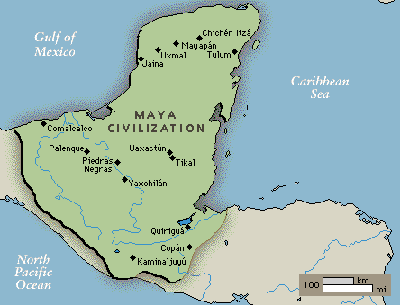

Here, a recent discovery overturned everything they thought they knew when more than 61,000 Maya structures were detected beneath a thick green veil of trees and vines.Īstonished researchers found not just a few new sites but thousands of Maya structures revealed by light detection and ranging (lidar) sensors and displayed on geographic information system (GIS) maps. Lidar data was collected across the region in a day, and it took the team several months to prepare and produce a comprehensive 3D map that unlocked a whole new view of the area’s past. The area is home to the Maya Biosphere Reserve where archaeologists have studied remnants of ancient Maya civilization for decades. By adding lidar to GIS maps, researchers are unlocking new sites, some hiding within modern cities.īordered on the north and west by Mexico and Belize to the east, the lush forests of Guatemala’s Petén region have long been recognized as a treasure trove of archaeological discovery.Lidar imagery revealed structures and additional clues about Maya sophistication and scale.Dense vegetation covered thousands of structures and blocked understanding of Maya civilization.Lamanai BZ – Temple of the Jaguar Masks 02 by Daniel Mennerich (CC BY-NC-ND 2.Archaeologists have gained a leap forward with lidar sensors to unlock hidden settlements buried in dense jungle vegetation. Tulum MEX – God of Winds Temple 01 by Daniel Mennerich (CC BY-NC-ND 2.0) UXMAL- Yucatan, Mexico by Rebeca Anchondo (CC BY-NC 2.0) Storm over Chichen Itza by Kirt Edblom (CC BY-SA 2.0)Įk Balam MEX – Building 17 (Los Gemelos) 01 by Daniel Mennerich (CC BY-NC-ND 2.0)

Tikal GCA – Great Plaza 01 by Daniel Mennerich (CC BY-NC-ND 2.0) Joya de Ceren by hectorlo (CC BY-NC-ND 2.0)Īcrópolis Norte de Yaxhá by Guillén Pérez (CC BY-ND 2.0) The dense jungles make getting to many of them a very difficult task and even the archaeologists take many days trekking to some of the remote sites. There are hundreds of sites built by the Maya throughout their ancient territory and more are discovered each year. This map shows some of the major cultural relics, but is by no means exhaustive. Even the use of the ancient Tzolk’in ritual calendar is still prevalent today. The civilization that began in 2000 BC still has a hold on the cultural makeup of the entire region and there are around 6 million speakers of more than 30 Mayan languages. While the Spanish colonial forces did erode much of the Maya culture, due to the remoteness of some of the villages and the depth of their cultural legacy, they retained a lot too. “ Mayan Girl” by Maria Figueroa (CC BY-NC 2.0) Dense populations of modern Maya live close to the huge edifices built by their ancestors before the arrival of the Spaniards. This is far from true and around 7 million descendants of the temple builders are scattered throughout the area. Many of us think of the Maya as an ancient people who are no longer around. The Maya people of the Yucatan peninsula have left a cultural legacy of ceremonial and city sites throughout an enormous area that includes Mexico, Guatemala, Belize, Honduras and El Salvador.


 0 kommentar(er)
0 kommentar(er)
